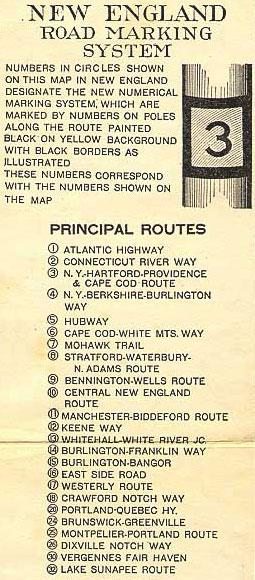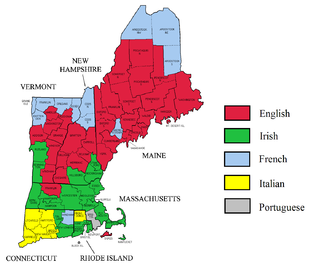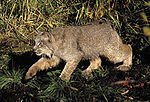
The East Coast of the United States, also known as the Eastern Seaboard, the Atlantic Coast, and the Atlantic Seaboard, is the region encompassing the coastline where the Eastern United States meets the Atlantic Ocean. The Thirteen Colonies, which formed the United States in 1776 were located on this coast, and it has played an important role in the development of the United States.

The Eastern United States, often abbreviated as simply the East, is a macroregion of the United States located to the east of the Mississippi River. It includes 17–26 states and Washington, D.C., the national capital.
The Yankee Conference was a collegiate sports conference in the eastern United States. From 1947 to 1976, it sponsored competition in many sports, but was a football-only league from mid-1976 until its dissolution in 1996. It is essentially the ancestor of today's CAA Football, the legally separate football league operated by the Coastal Athletic Association (CAA), and the continuation of the New England Conference, though all three leagues were founded under different charters and are considered separate conferences by the NCAA. Also, CAA Football does not recognize the New England Conference as one of its predecessors, though it does recognize the Yankee Conference as such. 2024 marked a return of The Yankee Conference when in August of 2024 it was announced that Merrimack College and Sacred Heart University would play for The Yankee Conference Championship presented by LEONA.

The New England road marking system was a regional system of marked numbered routes in the six-state region of New England in the United States. The routes were marked by a yellow rectangular sign with black numbers and border. Many signs were painted on telephone poles. The routes were approved by the highway departments of the six New England states in April 1922.

The town is the basic unit of local government and local division of state authority in the six New England states. Most other U.S. states lack a direct counterpart to the New England town. New England towns overlie the entire area of a state, similar to civil townships in other states where they exist, but they are fully functioning municipal corporations, possessing powers similar to cities and counties in other states. New Jersey's system of equally powerful townships, boroughs, towns, and cities is the system which is most similar to that of New England. New England towns are often governed by a town meeting, an assembly of eligible town residents. The great majority of municipal corporations in New England are based on the town model; there, statutory forms based on the concept of a compact populated place are uncommon, though elsewhere in the U.S. they are prevalent. County government in New England states is typically weak, and in some states nonexistent. Connecticut, for example, has no county governments, nor does Rhode Island. Both of those states retain counties only as geographic subdivisions with no governmental authority, while Massachusetts has abolished eight of fourteen county governments so far. Counties serve mostly as dividing lines for the states' judicial systems and some other state services in the southern New England states while providing varying services in the more sparsely populated three northern New England states.

The New England Patriots Radio Network is a radio network which carries live game broadcasts of the New England Patriots. The network's flagship station is WBZ-FM in Boston. Bob Socci, who now does the play-by-play with former Patriots quarterback Scott Zolak providing the color commentary and former Patriots linebacker Matt Chatham and WBZ-TV/WSBK-TV sports reporter Steve Burton providing the sideline reports. Marc Bertrand and Boston Globe sports columnist Chris Gasper host the pregame, and the postgame show is hosted by Bertrand. Albert Breer and Patriots Football Weekly writers Paul Perillo is a regular guest analyst on the network's pre-game show. Marc D. Cappello has been the producer since 1995.
New England English is, collectively, the various distinct dialects and varieties of American English originating in the New England area. Most of eastern and central New England once spoke the "Yankee dialect", some of whose accent features still remain in Eastern New England today, such as "R-dropping". Accordingly, one linguistic division of New England is into Eastern versus Western New England English, as defined in the 1939 Linguistic Atlas of New England and the 2006 Atlas of North American English (ANAE). The ANAE further argues for a division between Northern versus Southern New England English, especially on the basis of the cot–caught merger and fronting. The ANAE also categorizes the strongest differentiated New England accents into four combinations of the above dichotomies, simply defined as follows:
Three popular American sports were invented in New England. Basketball was invented by James Naismith, a Canadian, in Springfield, Massachusetts, in 1891. Volleyball was invented by William G. Morgan in Holyoke, Massachusetts, in 1895. Paintball was invented in 1981 in Henniker, New Hampshire.

The New England-Acadian forests are a temperate broadleaf and mixed forest ecoregion in North America that includes a variety of habitats on the hills, mountains and plateaus of New England and New York State in the Northeastern United States, and Quebec and the Maritime Provinces of Eastern Canada.

The New England cottontail, also called the gray rabbit, brush rabbit, wood hare, wood rabbit, or cooney, is a species of cottontail rabbit represented by fragmented populations in areas of New England and the state of New York, specifically from southern Maine to southern New York. This species bears a close resemblance to the eastern cottontail, which has been introduced in much of the New England cottontail home range. The eastern cottontail is now more common in it.

New England is a region comprising six states in the Northeastern United States: Connecticut, Maine, Massachusetts, New Hampshire, Rhode Island, and Vermont. It is bordered by the state of New York to the west and by the Canadian provinces of New Brunswick to the northeast and Quebec to the north. The Gulf of Maine and Atlantic Ocean are to the east and southeast, and Long Island Sound is to the southwest. Boston is New England's largest city and the capital of Massachusetts. Greater Boston is the largest metropolitan area, with nearly a third of New England's population; this area includes Worcester, Massachusetts, the second-largest city in New England; Manchester, New Hampshire, the largest city in New Hampshire; and Providence, Rhode Island, the capital of and largest city in Rhode Island.

According to the 2018 American Community Survey, New England had an estimated population of 14,853,290, of which 48.7% were male and 51.3% were female. Approximately 19.7% of the population were under 18 years of age; 17.4% were 65 years of age or over.

There are at least 9 large terrestrial mammals, 50 small mammals, and 14 marine mammal species known to occur in Olympic National Park.

The climate of New England varies greatly across its 500-mile (800 km) span from northern Maine to southern Connecticut.
The culture of New England comprises a shared heritage and culture primarily shaped by its indigenous peoples, early English colonists, and waves of immigration from Europe, Asia, Africa, and the Americas. In contrast to other American regions, most of New England's earliest Puritan settlers came from eastern England, contributing to New England's distinctive accents, foods, customs, and social structures.
Transportation in New England encompasses the region's rail and highway networks, seaports, and airports. New England has one of the United States' oldest intercity transportation systems, which remain important to the region's economy. It is also home to the continent's first subway system. The densely populated area has many cities and towns connected by rail and road, and the larger cities each have commercial airports with daily flights to destinations outside of the region.




















































